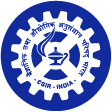| Section | Topics | Subtopics |
| General Aptitude | Verbal Aptitude | Basic English grammar: Tenses, articles, adjectives, prepositions, conjunctions, verb-noun agreement, and other parts of speech, Basic vocabulary: Words, idioms, and phrases in context, Reading and comprehension, Narrative sequencing. |
| Quantitative Aptitude | Data interpretation: Data graphs (bar graphs, pie charts, and other graphs representing data), 2- and 3-dimensional plots, maps, and tables, Numerical computation and estimation: Ratios, percentages, powers, exponents and logarithms, permutations and combinations, and series, Mensuration, and geometry, Elementary statistics, and probability. |
| Analytical Aptitude | Logic: Deduction and induction, Analogy, Numerical relations, and reasoning. |
| Engineering Mathematics | Calculus | Limits, continuity, and differentiability; partial derivatives, maxima, and minima; sequences and series; test for convergence |
| Probability And Statistics | Mean, median, mode, and standard deviation; random variables; Poisson, normal, and binomial distributions; correlation and regression analysis. |
| General Biology | Biochemistry | Biomolecules-structure and function; biological membranes-structure, membrane channels, and pumps, molecular motors, action potential, and transport processes; basic concepts and regulation of the metabolism of carbohydrates, lipids,Amino acids, and nucleic acids; photosynthesis, respiration, and electron transport chain, Enzymes-classification, catalytic, and regulatory strategies; enzyme kinetics-Michaelis-Menten equation; enzyme inhibition-competitive, non-competitive, and uncompetitive inhibition |
| Immunology | Innate and adaptive immunity, humoral and cell-mediated immunity; antibody structure and function; molecular basis of antibody diversity; T cell and B cell development; antigen-antibody reaction; complement; primary and secondary lymphoid organs, Major histocompatibility complex (MHC); antigen processing and presentation; polyclonal and monoclonal antibody; regulation of immune response; immune tolerance; hypersensitivity; autoimmunity; graft versus host reaction; immunization and vaccines. |
| Bioprocess engineering and process biotechnology | Bioreactor Engineering | Rate law, zero, and first-order kinetics; ideal reactors-batch, mixed flow, and plug flow; enzyme immobilization, diffusion effects-Thiele modulus, effectiveness factor, Damkohler number; kinetics of cell growth, Substrate utilization, and product formation; structured and unstructured models; batch, fed-batch, and continuous processes; microbial and enzyme reactors; optimization and scale up. |
| Instrumentation And Process Control | Pressure, temperature, and flow measurement devices; valves; first order and second order systems; feedback and feed-forward control; types of controllers-proportional, derivative, and integral control, tuning of controllers |
| Plant, animal, and microbial biotechnology | Plants | Totipotency; regeneration of plants; plant growth regulators and elicitors; tissue culture and cell suspension culture system-methodology, the kinetics of growth and nutrient optimization; production of secondary metabolites; hairy root culture, Plant products of industrial importance; artificial seeds; somaclonal variation; protoplast, protoplast fusion-somatic hybrid, and cybrid; transgenic plants-direct and indirect methods of gene transfer techniques; selection marker and reporter gene, Plastid transformation |
| Microbes | Production of biomass and primary/ secondary metabolites-biofuels, bioplastics, industrial enzymes, antibiotics; large-scale production and purification of recombinant proteins and metabolites; clinical-, food-, and industrial microbiology, Screening strategies for new products |
| Genetics, cellular, and molecular biology | Cell Biology | Prokaryotic and eukaryotic cell structure; cell cycle and cell growth control; cell-cell communication; cell signaling and signal transduction; post-translational modifications; protein trafficking; cell death and autophagy; extra-cellular matrix |
| Molecular Biology | Molecular structure of genes and chromosomes; mutations and mutagenesis; regulation of gene expression; nucleic acid-replication, transcription, splicing, translation, and their regulatory mechanisms; Non-coding and micro RNA; RNA interference, DNA damage, and repair. |
| Bioprocess Engineering and Process Biotechnology | Upstream And Downstream Processing | Media formulation and optimization; sterilization of air and media; filtration-membrane filtration, ultrafiltration; centrifugation-high speed and ultra; cell disruption; principles of chromatography-ion exchange, gel filtration, hydrophobic interaction, Affinity, GC, HPLC, and FPLC; extraction, adsorption, and drying. |
| Bioreaction Engineering | Rate law, zero, and first-order kinetics; ideal reactors-batch, mixed flow, and plug flow; enzyme immobilization, diffusion effects-Thiele modulus, effectiveness factor, Damkohler number; kinetics of cell growth, Substrate utilization, and product formation; structured and unstructured models; batch, fed-batch, and continuous processes; microbial and enzyme reactors; optimization and scale up. |
| Fundamentals of biological engineering | Transport Process | Newtonian and non-Newtonian fluids, fluid flow-laminar and turbulent; mixing in bioreactors, mixing time; molecular diffusion and film theory; oxygen transfer and uptake in a bioreactor, kLa and its measurement; conductive and convective heat transfer, LMTD, Overall heat transfer coefficient; heat exchangers |
| Classic Thermodynamics and Bioenergtics | Laws of thermodynamics; solution thermodynamics; phase equilibrium, reaction equilibrium; ligand binding; membrane potential; energetics of metabolic pathways, oxidation, and reduction reactions |



